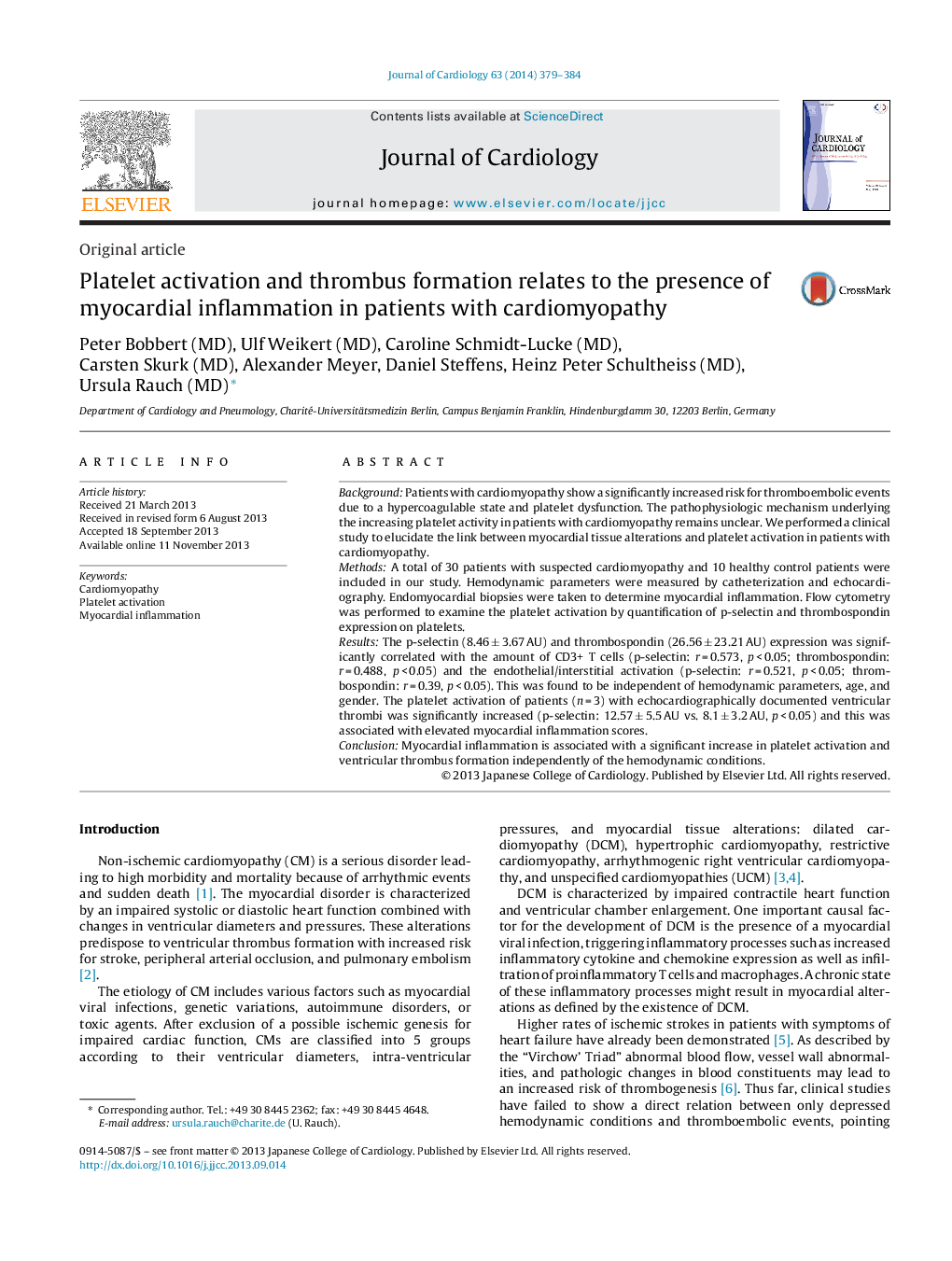| Article ID | Journal | Published Year | Pages | File Type |
|---|---|---|---|---|
| 2963043 | Journal of Cardiology | 2014 | 6 Pages |
BackgroundPatients with cardiomyopathy show a significantly increased risk for thromboembolic events due to a hypercoagulable state and platelet dysfunction. The pathophysiologic mechanism underlying the increasing platelet activity in patients with cardiomyopathy remains unclear. We performed a clinical study to elucidate the link between myocardial tissue alterations and platelet activation in patients with cardiomyopathy.MethodsA total of 30 patients with suspected cardiomyopathy and 10 healthy control patients were included in our study. Hemodynamic parameters were measured by catheterization and echocardiography. Endomyocardial biopsies were taken to determine myocardial inflammation. Flow cytometry was performed to examine the platelet activation by quantification of p-selectin and thrombospondin expression on platelets.ResultsThe p-selectin (8.46 ± 3.67 AU) and thrombospondin (26.56 ± 23.21 AU) expression was significantly correlated with the amount of CD3+ T cells (p-selectin: r = 0.573, p < 0.05; thrombospondin: r = 0.488, p < 0.05) and the endothelial/interstitial activation (p-selectin: r = 0.521, p < 0.05; thrombospondin: r = 0.39, p < 0.05). This was found to be independent of hemodynamic parameters, age, and gender. The platelet activation of patients (n = 3) with echocardiographically documented ventricular thrombi was significantly increased (p-selectin: 12.57 ± 5.5 AU vs. 8.1 ± 3.2 AU, p < 0.05) and this was associated with elevated myocardial inflammation scores.ConclusionMyocardial inflammation is associated with a significant increase in platelet activation and ventricular thrombus formation independently of the hemodynamic conditions.
